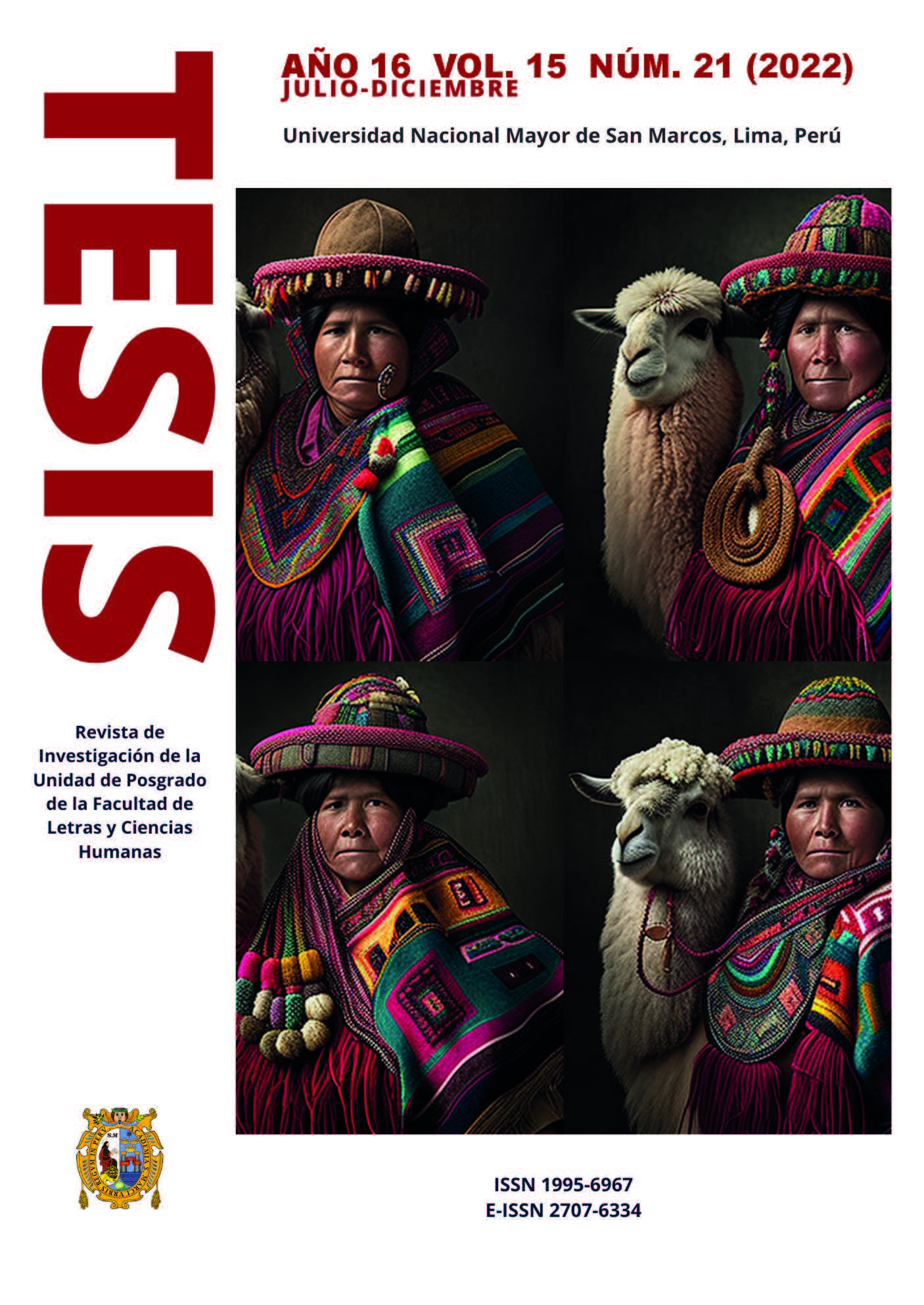A feminist figuration from the interior focus in the story “The child and the morning” by Laura Riesco
DOI:
https://doi.org/10.15381/tesis.v15i21.24090Keywords:
feminism, masculinization, narratology, narrative perspective, free indirect styleAbstract
This article will analyze the story El niño y la mañana by the Peruvian writer Laura Riesco. Inner focus will be studied in it, a theory developed by the Frenchman Gerard Genette that proposes a narrator circumscribed to the consciousness of a character. In addition to Genette, the studies of Mieke Bal, Seymour Chatman, José Valles Calatrava and Eric Rundquist will be taken. Likewise, how this perspective allows us to know the subtext that exists behind the story. This will be seen from the postulates of Ernest Hemingway who developed this in his Iceberg theory and the writers Ricardo Piglia and Juan Villoro. Finally, in that subtext that keeps the story, the feminist discourse embodied in the main character will be deepened. This will be analyzed from the perspective of the French philosopher Gilles Lipovetsky and the theory of the Third Woman together with the studies of Mariemma Mannarelli and Cyinthia Enloe.
References
Bal, M. (1990). Teoría de la narrativa. Una introducción a la narratología. (3º ed.). Cátedra.
Cabrera, J. (2015, 7 de abril). Un escritor que se siente seguro de sí mismo está perdido. En Lee por Gusto. https://leeporgusto.com/2015/04/07/un-escritor-que-se-sienta-seguro-de-si-mismo-esta-perdido/
Calderón, T. (2006). La teoría del iceberg y la práctica de la alusión en los cuentos de Ernest Hemingway y de Francisco Coloane. Acta Literaria, (32), pp. 97-105. http://dx.doi.org/10.4067/S0717-68482006000100008
Chatman, S. (1990). Historia y discurso. La estructura narrativa en la novela y en el cine. Madrid: Taurus.
Daros, W. (2014). La mujer posmoderna y el machismo. Franciscanum, 55(162), 107-129. https://doi.org/10.21500/01201468.789
Enloe, C. (2019). Empujando al patriarcado. Ediciones Catedra. Universitat de València.
García, J. (1992). Problemas teóricos de la focalización narrativa (para una teoría “general” de la focalización). Tropelías. Revista de Teoría de la Literatura y Literatura Comparada, (3), 33-52.
Genette, G. (1972). El discurso del relato. Ensayo de método. Narciso Costa Ros (trad.), Figures III (pp. 65-224). Editions du Seuil.
González Vigil, R. (2013). El cuento peruano 2001-2010. Lima: Ediciones Copé.
Lipovetsky, G. (2007). La tercera mujer. Anagrama.
Mannarelli, M. (2018). La domesticación de las mujeres. La siniestra ensayos.
Peri Rossi, C. (1997). Génesis de un cuento. En Eva Valcárcel (Ed.), El cuento hispanoamericano. Teoría y práctica (pp. 281-292). Universidade da Coruña, Servizo de Publicacións.
Pollarolo, G. (2020). Riesco y la magia espeluznante de la pluma. En Laura Riesco (AA.), Ximena de dos caminos (pp. 11-16). Editorial Lumen.
Piglia, R. (1986). Formas breves. Editorial Anagrama.
Riesco, L. (1978). El truco de los ojos. Editorial Milla Batres.
Riesco, L. (2020). Ximena de dos caminos. Lumen.
Rundquist, Eric. (2018). Estilo indirecto libre (Woolf, Lawrence, Joyce). Montacerdos Editorial.
Tello, A. (2009). La reconfiguración del Bildungsroman tradicional en Ximena de dos caminos de Laura Riesco. [Tesis para optar el título de licenciada en lingüística y literatura]. Pontificia Universidad Católica del Perú. http://hdl.handle.net/20.500.12404/654
Valles Calatrava, J. (2008). Teoría de la narrativa. Una perspectiva sistemática. Madrid: Iberoamericana-Vervuert.
Vázquez, V., Risquez, M., Perazzolo, R., & Giménez, C. (2014). Resistencias desde los márgenes: La experiencia migratoria de las mujeres como forma de agenda social. Revista de estudios de género La Ventana, 5(40), pp. 59-87. https://www.redalyc.org/articulo.oa?id=88435817004
Villoro, J. (2019). Mente y escritura. Fondo Editorial del Museo de Arte Latinoamericano de Buenos Aires.
Downloads
Published
Issue
Section
License
Copyright (c) 2023 Daniel Enrique Mitma Chávez

This work is licensed under a Creative Commons Attribution 4.0 International License.
THE AUTHORS RETAIN THEIR RIGHTS:
(a) The authors retain their trademark and patent rights, and also on any process or procedure described in the article.
(b) The authors retain the right to share, copy, distribute, execute and publicly communicate the article published in Tesis (Lima) (in example, depositing the article in an institutional repository or publish it in a book), with recognition of its initial publication in the Tesis (Lima).
(c) The authors retain the right to make a later publication of their work, to use the article or any part of it (for example: a compilation of their works, notes for conferences, thesis, or for a book), provided that they indicate the source of publication (authors of the work, magazine, volume, number and date).














